Various definitions of product management have been floating around for more than two decades now. In fact, product managers themselves may have varying definitions of product management.
Martin Eriksson’s representation, though overused, remains extremely relevant to the present day. The product manager’s role oscillates between gathering customer needs/wants, aligning business objectives, hand-in-glove relationship with the tech and design teams; and extensive data crunching. Product managers can perform these roles by interacting with business stakeholders or meeting users directly. He can also do market analysis, competitive analysis, derive impact of product changes and more.
“A product manager is essentially a person who is tasked with identifying the customer needs and the larger business objectives that a product or feature will fulfill, thereby articulating what success looks like for the product, and drives the team to turn that vision into a reality.”
In our earlier published article, we have addressed the key questions one may have in product management. Here we will cover the myths, core values, methodologies, and scope of product management.

Myths about product management
Over the years several myths about the function have surfaced. It is influenced by the fact that there is no exact definition and job description of Product Manager or PM. Some of these myths are listed below –
PM is CEO of the product – Unlike the CEO, a PM gets pulled in all directions by various stakeholders. The PM commands minimal authority as the stakeholders try to incorporate their own suggestions into the product. Even the team the PM rallies, do not report to him/her. Hence the reality is far from this loosely thrown moniker.
PM should be creative – The primary role of the PM is to solve the customers’ problems. It is their responsibility to pull all the strings together to deliver a quality product. So rather than having abundant creativity, a PM must pay attention to all minute details.
PM should be a visionary – The PM looks for the most efficient way to solve customer’s problem. He doesn’t go deep into the future problems or solutions the customer may face or need. It is futile to expect a prediction of exact date and time of migration of entire Web 2.0 to Web 3.0 from a PM.
PM needs to make every stakeholder happy – The only person a PM should look to make happy is the customer. It doesn’t matter whose suggestions and needs get more priority as long as the customer is happy. Due to this, many times some key stakeholders will not be happy. But a PM must always look at the ultimate goal.
PM must know coding – Technical knowledge does help when allocating tasks and assigning timelines. But that doesn’t mean only software engineers can be exceptional product managers. You can do very well without knowing how to code via the help of various software tools.
Product Manager and Project Manager are the same – Product Management and Project Management are loosely interchanged in corporate parlance but essentially, they are worlds apart.

Some common methodologies/models in product management
Agile
The idea is to set product strategy and create product roadmaps in an agile environment. Agile methodology encourages an adaptive approach to product planning and implementation. It enables organizations to quickly respond to feedback and build products that customers love. At its core, agile product management is a response to the widespread use of agile software development methodologies. These methods emphasize evolutionary development, early delivery, and continuous improvement.
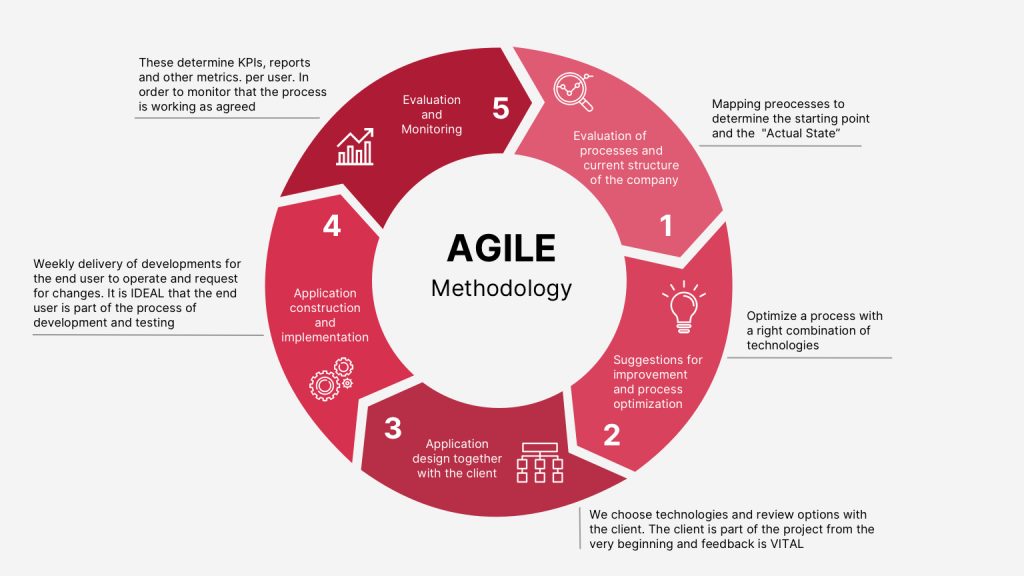
Scrum
Scrum is a type of agile development methodology. It is used in the development of software based on an iterative and incremental process. It is an adaptable, fast flexible, and effective agile framework used during development.
Scrum delivers value to the customer throughout the development of the project. It creates an environment of transparency in communication, collective responsibility, and continuous progress.
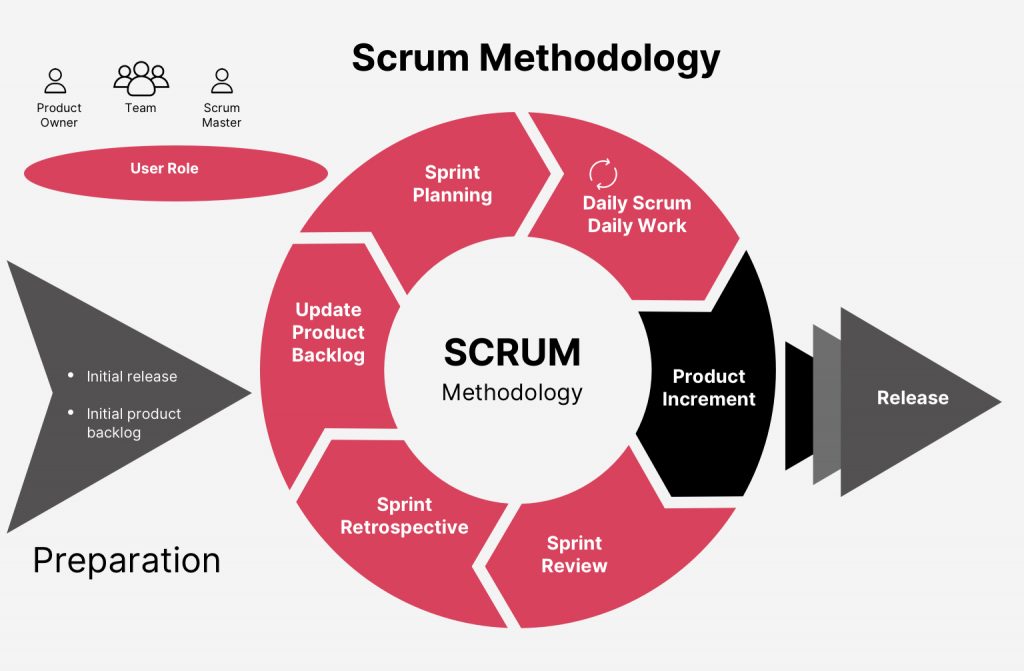
Waterfall
Waterfall model can be best put as a linear product management approach. Here the PM creates a sequential project plan after gathering stakeholder and customer requirements at the beginning of the project. It is named the waterfall model because each phase of the project cascades into the next, flowing steadily down like a waterfall.
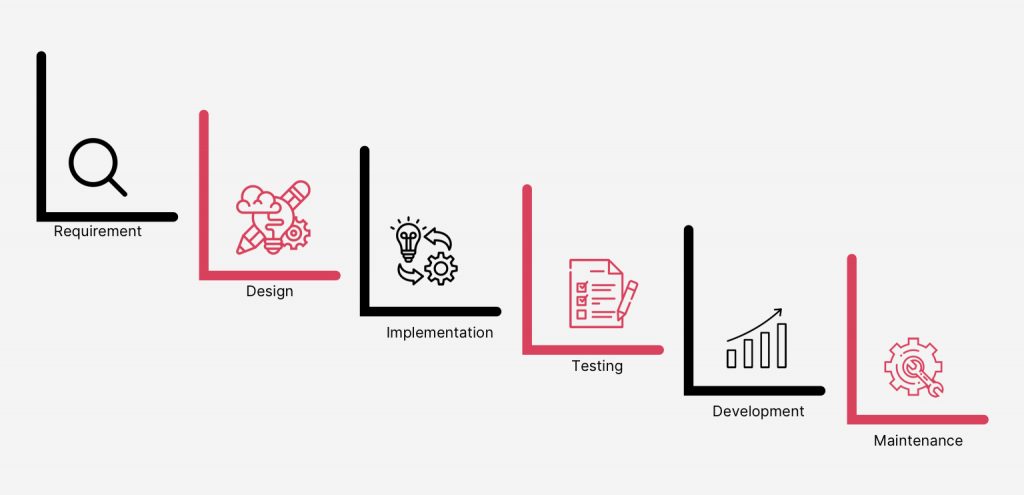
General Structure of Product Manager/Product Owner Squad
The basic structure of the Product Manager Squad remains the same despite having a fluid headcount.
- The Scrum Master handles picking up the tasks for the developers and designers and clearly capturing them in time bound sprints.
- The Business Analyst helps in writing user stories that are captured in product management tools like Jira. They also help with data crunching – market and competitive analysis, how the changes in the product are faring, etc.
- Then there are development team members – the ones working on the front end, back end, and middleware. They comprise of Developers, Testers, Solutions Architects and DBAs. The profiles of developers vary according to their expertise in specific technologies.
- And last but not least comes the creative lot – the designers. They comprise of Design Architects, UX Designers and UI Designers.
Now these team members could be working on the payroll of the product organization, or they may be outsourced.

What makes a great Product Manager?
Before deciding what makes a great product manager, we need to understand and appreciate their role. A product manager’s role is truly a people’s role that involves taking inputs/ buy-ins of numerous stakeholders and getting work done through multiple team members.
Hence, we can say that although technological know-how/ core competencies are imperative, the one skill that really distinguishes good product managers from great ones is – stakeholder management.
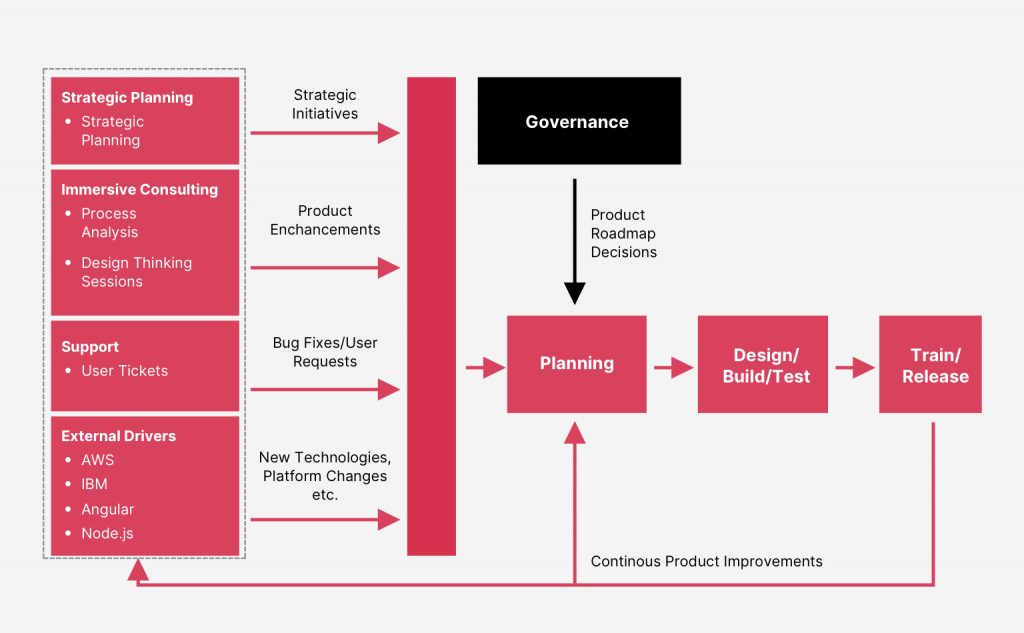
And if one wants to shift organizations for personal growth, the following aspects must be looked at with great detail:
- The current stage of the organization – introduction/ growth/ maturity/ decline.
- Industry analysis– which sector the company operates in. The learnings in one industry will vary from the other. Hence the decision to shift should be made by weighing the learning trajectory and not just the compensation on offer.
- Culture fit– All companies have different ways of working. What works for one product manager might not work for the other and vice versa. Look into the company philosophy and vision.
Thus, we can argue that it’s the “product management mindset” that helps you grow in this profession rather than just having skills.
A glimpse of popular tools used by product managers worldwide
There’s no dearth of online tools which can life easier for any role nowadays. Here are a few common tools to meet the common needs of a product manager.
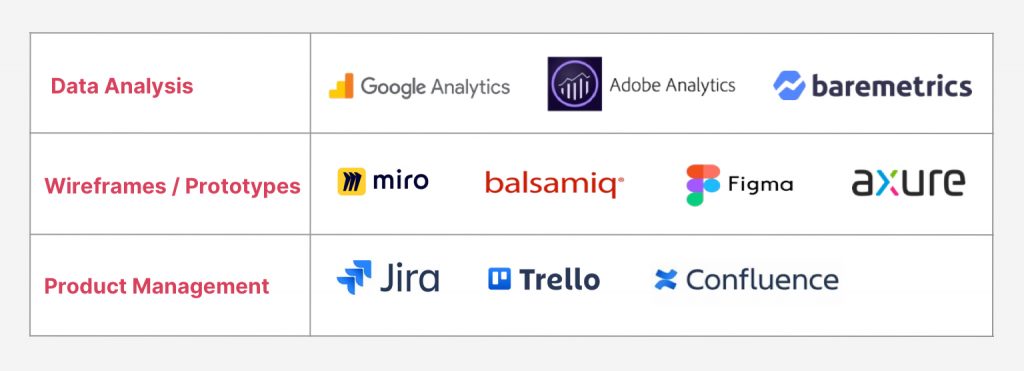
What is MVP and its significance beyond the set features?
Of all the milestones in the career span of product managers, the MVP is arguably the most important milestone.
Minimum Viable Product (MVP) can be graphically represented as below:

This graph takes the assumption that customer expectations remain static with time, which usually is not the case. All the skills, tools and methodologies are applied to arrive at this milestone. It further lays the foundation for incremental features in the product.
A timely MVP is hence the validation of all the inputs at play. These are – stakeholders’ inputs, market research and data crunching done to arrive at handpicked features, the effectiveness of the design and development teams, and of course, the dexterity of the omnipresent PM. A great MVP is reflection of a team which is working like a well-oiled machine. It is bound to achieve great heights with its vision and execution capabilities.
Product management: eternally relevant
With the increasing adoption of tech in all spheres of life, the relevance of product management will continue to grow. As we can see, traditional companies continue to invest in and augment their digital infrastructure. Top tech companies are pivoting their business strategies. The final execution of all these responsibilities comes on the shoulders of the product management team.
Just as brand management is an amalgamation of several skill sets, so too is product management. It calls for an understanding of consumer behavior, market trends and the role of technology in solving consumer pain points and meeting their needs. Given the central role of digital experiences in our lives, the relevance of a specialist role like product management will only increase.
